Assignments for chapter 4: perception¶
Reading Assignment: Reflexivity Revisited¶
For this week's theory, we read a paragraph of Katherine Hayles How We Became Post Human (Hayles, 1999). We have already encountered Hayles in the reading assignment of week 2, when we talked about what it meant to be post human.
This week, we read Reflexivity Revisited (pp.132-140). In this paragraph, Hayles is describing the theory of perception that came about during the Macy Conferences on Cybernetics, which were organized between 1946 and 1953. The principal purpose of these series of conferences was to set the foundations for a general science of the workings of the human mind. These were one of the first organized studies of interdisciplinarity, spawning breakthroughs in systems theory, cybernetics, and what later became known as cognitive science. We have talked about the emergence of cybernetics in the discussions about post-humanism and the two types of technology (week 2).
Info
Though this book is not (yet) available via the Minerva library, you can easily find a pdf version of it online; just search for the book title.
Questions
One of the central issues in the text is the relationship between the observer and the observed. For example, Hayles quotes Humberto Maturana in stating that "to speak of an objective existing world is misleading, for the very idea of a a world implies a realm that preexists its construction by an observer. [Reality] comes into existence for us only through interactive processes determined solely by the organism's own organisation." (p.136).
-
How do you relate to this statement when you think about your perception of painting and statues, music, or poetry?
-
Can you relate this statement to the quote of Louise Barrett that we encountered in the first chapter (and which we will revisit in this one), about the 'resulting adaptive fit between organism and environment' that constitutes a 'kind of knowledge' (Barrett 2011, p.84)?
Maturana descibes perception in terms of a unity having a structural coupling with a medium (p.138). A fundamental cognitive operation for any observer (unity) is the operation of distinction (p.137).
-
How does this 'fundamental operation of distinction' relate to our discussions on identity in the previous chapter?
-
Have a look at the Mu-puzzle below. This is a depection of holism and reductionism, made by Douglas Hofstadter in his famous book Gödel, Escher, Bach (Hofstadter 1979, p.310). In it, you can see different letters (words) depending on what you focus on. Can you give examples of artworks (better and more interesting that Hofstadter's drawing) that play with this same phenomenon?
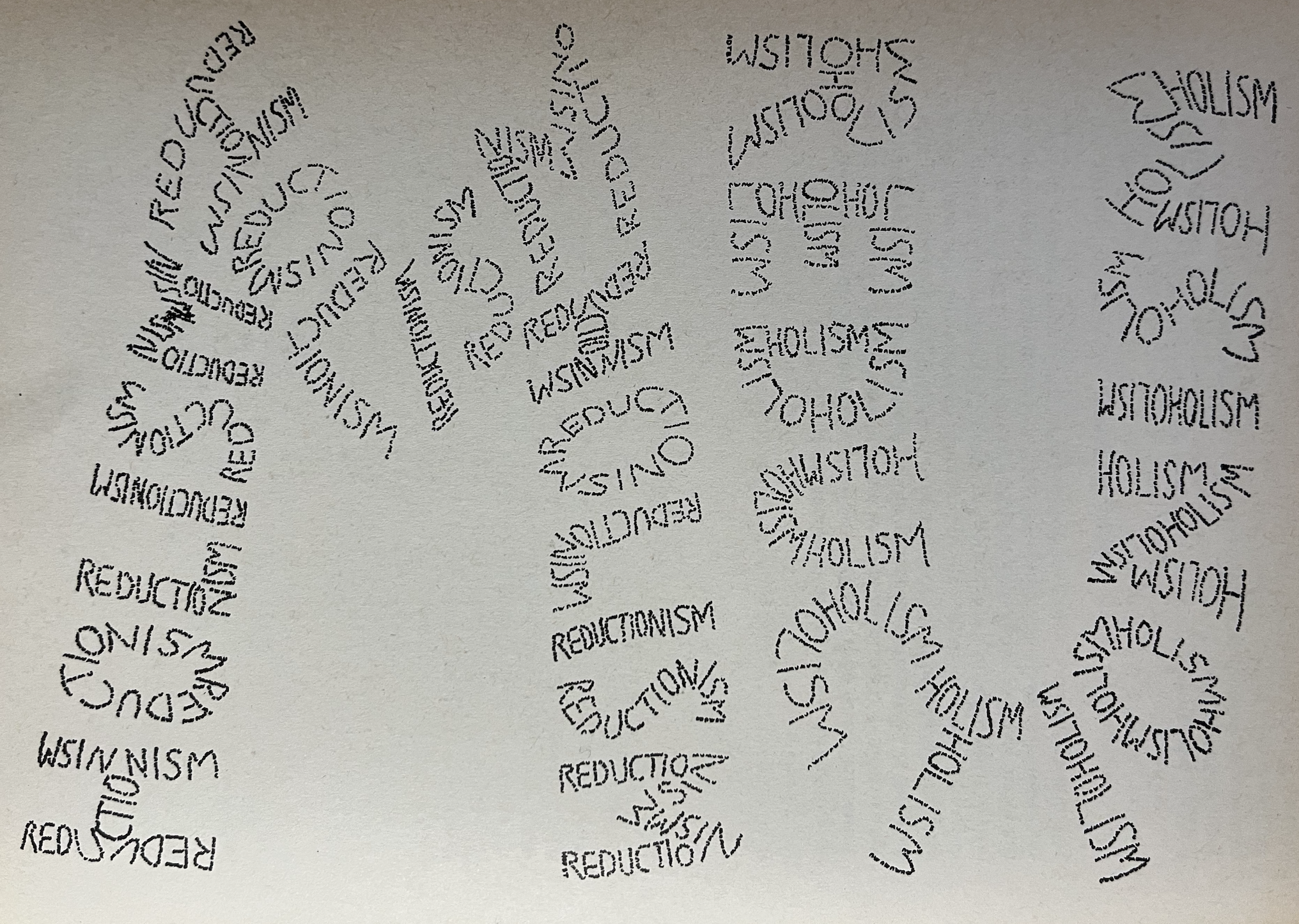
bonus question
In his interesting (but big) book Resonantz, the famous contemporary German sociologist Hartmut Rosa is talking about the human body as an organ of resonance (Resonanzorgan, Rosa 2022, p.129): we are resonating with the things around us (the world, the reality). How do you relate to this statement when you think about your perception of painting and statues, music, or poetry?
We will talk about resonance at quite some lenght during this session.
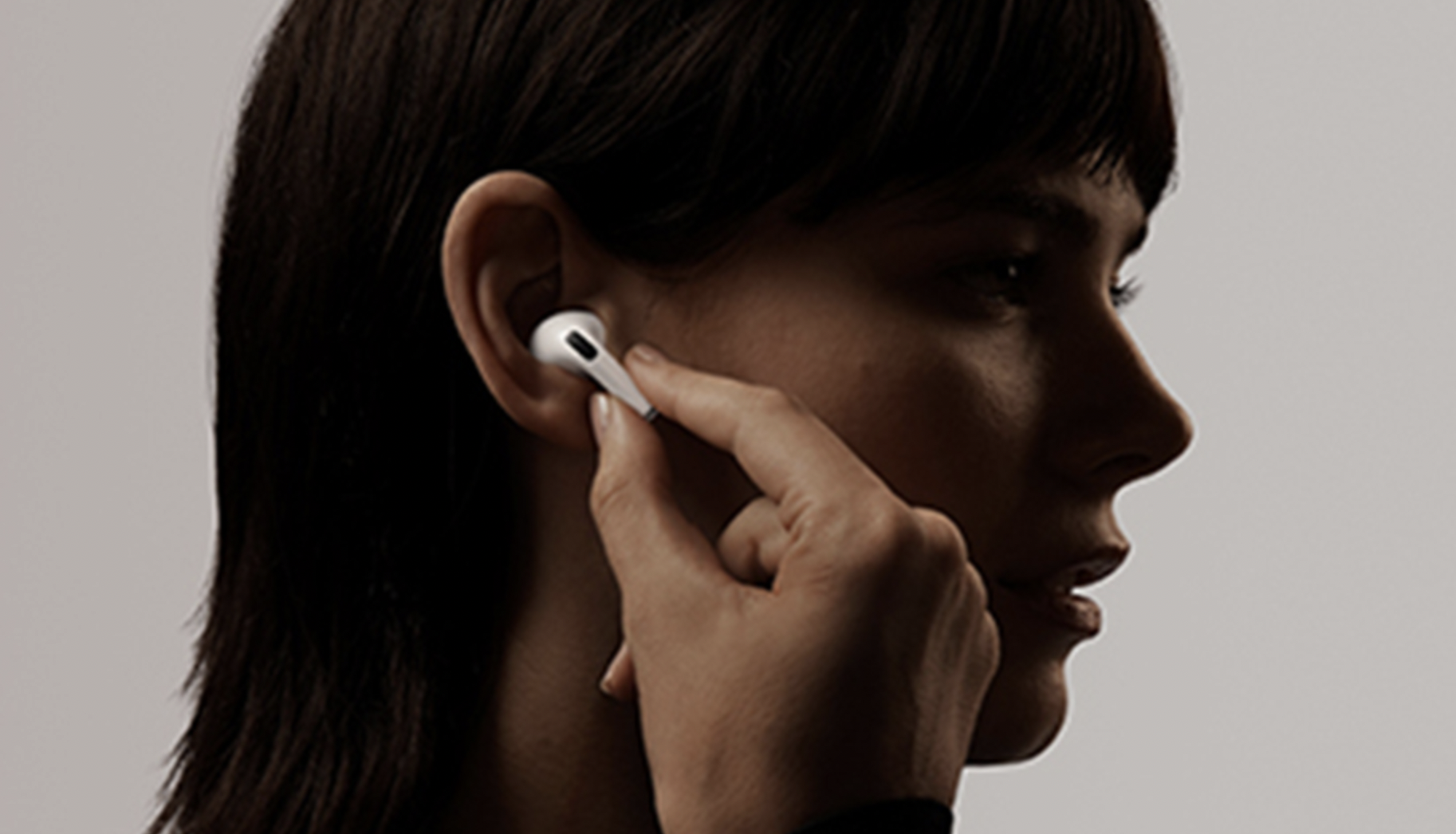
Ant Ballet¶
With Ant Ballet, artistic researcher Ollie Palmer tries to visualise loss of agence, disorientation, and invisible power structures. He does so by interfering with the internal communication systems of ants. Ants are commonly known to form and follow pheromone trails in order to find food. Since the early 1990s, the emergent behaviour demonstrated by this model of communication has fascinated computer scientists to the extent that it has frequently been used as a model for solving complex problems.
The Ant Ballet project used artificial pheromones to script the movement of a colony of ants. It did so via a machine that spread ant pheromones across a two-metre diameter ‘stage’ which acted as a literal theatre of absurd.
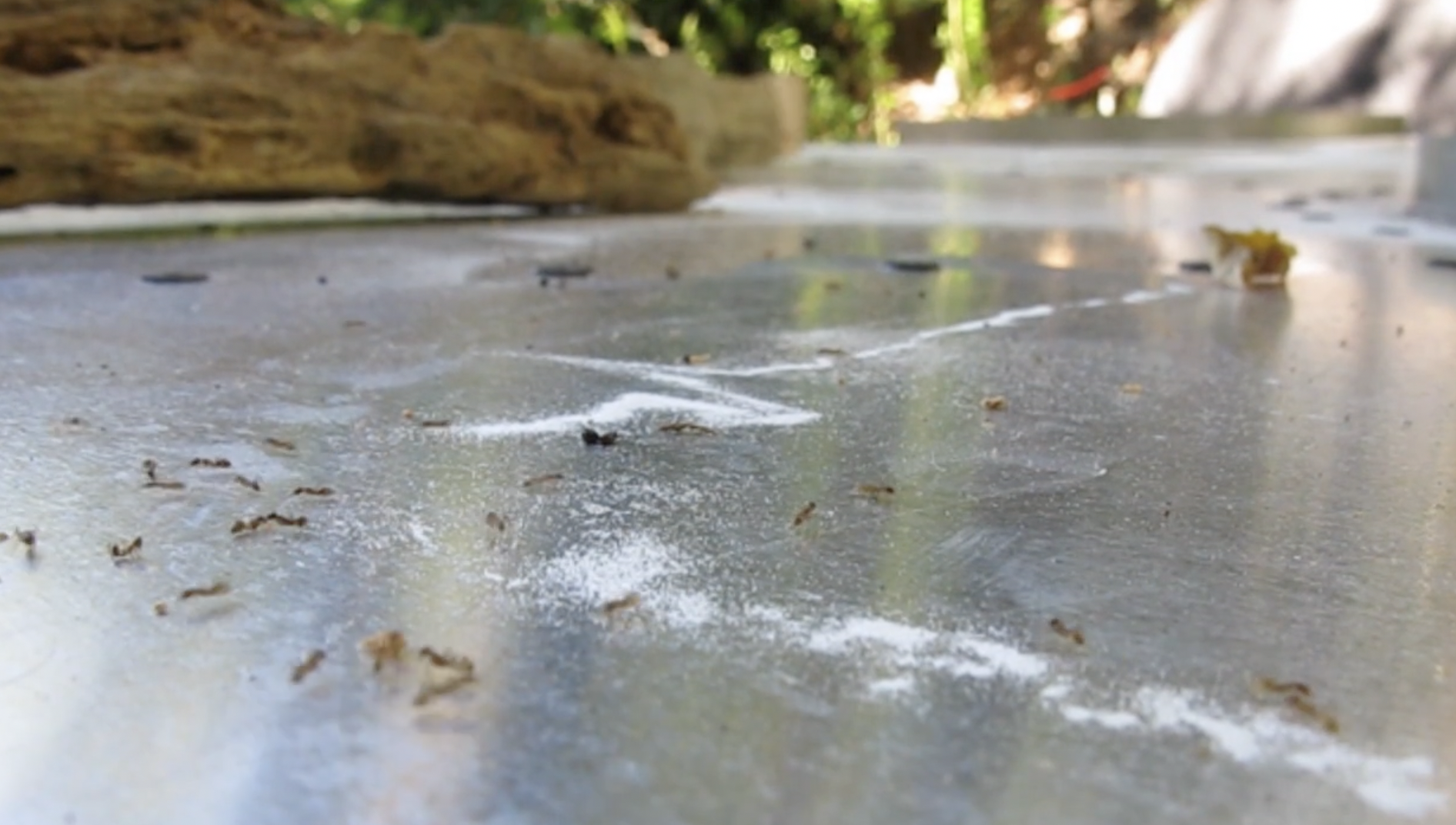
You can find a video of the performance on vimeo. A small description of the work is given on olliepalmer.com, and an even more eloborative text describing the work is part of his PhD-thesis.
Questions
-
A lot of infrastructure that we use daily is governed by all sorts of rules and regulation. Most notably air traffic, but also maritime or road cargo transportation are followed and directed by all sorts of controllers. Though more regular traffic like bikes and cars are less controlled, also those drivers need to perceive a lot of structures, signs and land marks. Do you think that these things form a manifestation of loss of agency and power structures? Do you actually see the road signs when you are driving...?
-
The species used by Palmer, Linepithema Humile, is known to form what are called supercolonies: a large number of nests spread over large areas where the individuals from one nest can be brought to any other nest and accepted as nestmates. The identification of the stem of the individuals is done using – you guessed it – pheromones. So you could say that these ants identify each other by scent.
-
When you identify your friends or family, do you only use your sight? Can you imaging employing other modalities in order to know who or what is in front of you? Do you think we are always only using one modality in order to identify someone or something?
-
If you think back on our elaboration of identity in the previous chapter, how would you identify two things as being the same without employing sight?
-
The perceived identity of the ant individual serves to create colonies. How does perception help to create communities in the human sphere?
-
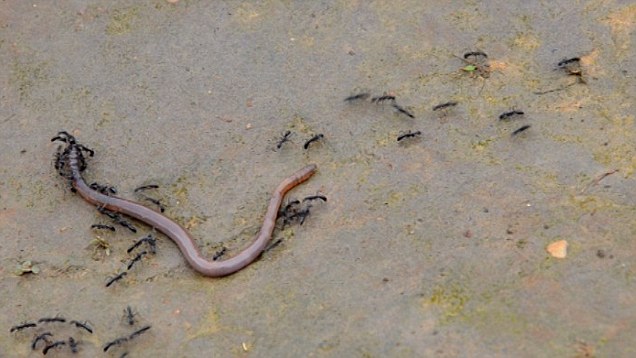
Waiting for Earthquakes¶
Waiting for Earthquakes is a dance piece based on the interaction between the movement of the earth Moon Ribas, who has a sensor attached to her feet. This custom developed sensor allows her to feel earthquakes in real time anywhere on the planet. The piece comprises an intimate duet, with the planet dictating the tempo and intensity, while Ribas interprets the Earth through her movement.
Moon Ribas is a Catalan avant-garde artist and cyborg activist. Since 2007 she has been experimenting with the union between technology and her body to explore the boundaries of perception and to experience movement in a deeper way. Ribas believes that by extending our senses to perceive outside the planet, we can all become senstronauts.
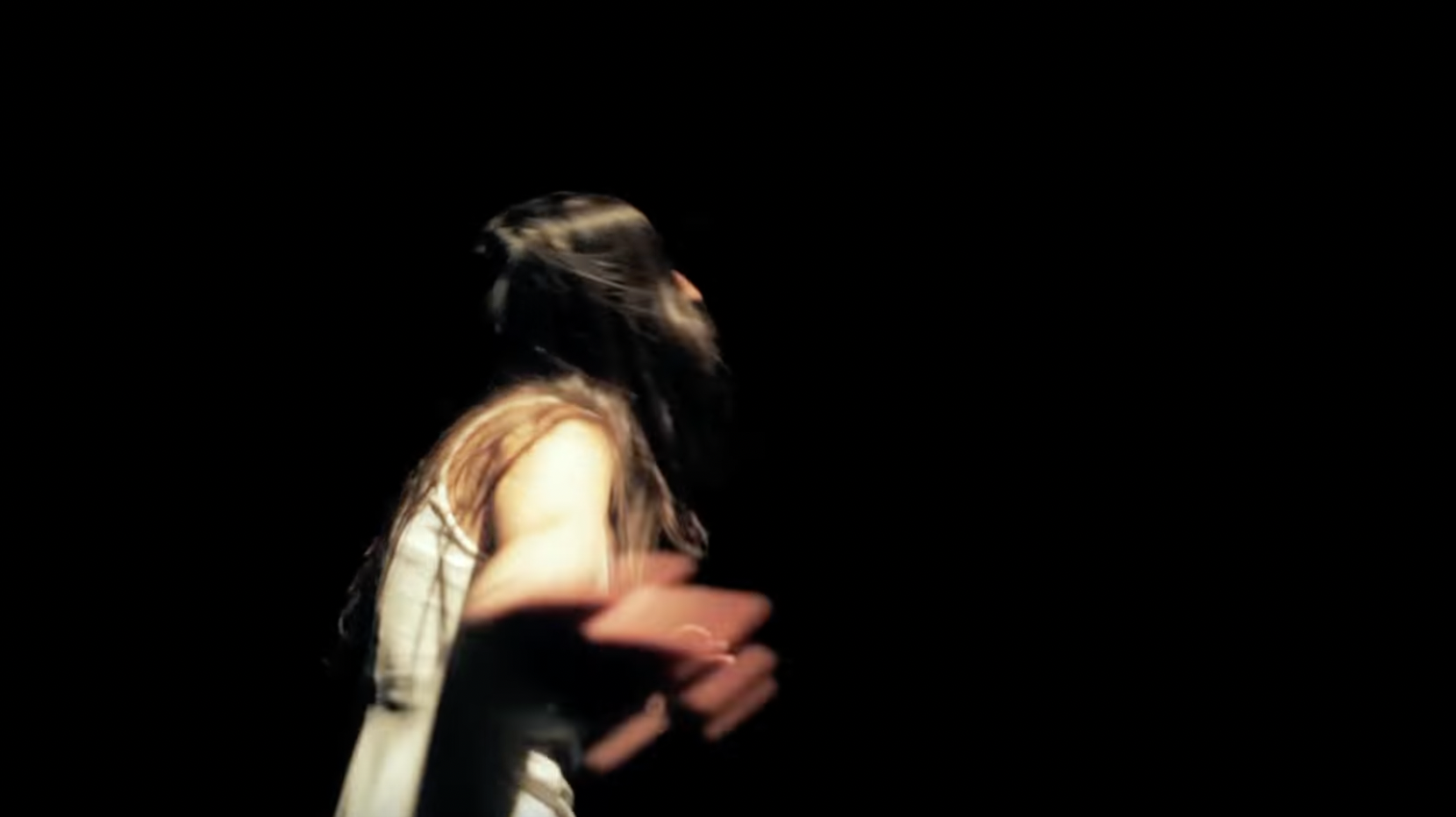
You can find a performance of Waiting for Earthquakes on youtube. There's also a nice interview with Moon Ribas, where she does not dance but instead uses a big trum to make the same phenomenon known (a piece call Seismic Percussion).
Questions
-
This work makes clear that we can (and do) extend our perceptive apparatus with technological artefacts. However, a pair of glasses, a hearing aid or a blind man's stick are somewhat more accepted than these custom developed sensors. Do you think that there is a qualitative difference between them, or are all of these aids on the same level?
-
Waiting for Earthquakes could be seen as a translation of earthquakes (which we sometimes can experience, but never all of them) into something we can perceive all of the time. In that sense, it is both a focal point and an interface for global unperceivable phenomena. In the same way, we cannot perceive individual electrons, but we can observe their traces – when we are looking at their ionization track in a cloud chamber. Can you come up with other examples among the same path (things that make the unperceivable perceivable)?
-
Moon Ribas is part of a group of cyborg artists, together with Neil Harbisson and Pol Lombarte – have a look at their respective pages in order to get an idea of their works and opinions.
-
Do you think the idea of extending the human corpus with technological artefacts is actually a case for art, or is it just more technology?
-
How does this phenomenon relate to the work of Stelarc, that we saw in the seconds session?
-
Can you relate the works of the cyborg artists to the observations of (1) Bernhard Stiegler and (2) Helmut Plessner (resp. presentations 2 and 3)?
-
Boem Paukenslag¶
Another form of translation between different modalities can be seen in visual poetry. So, for example we look at a famous visual poem by Paul van Ostaijen. It is in Dutch, but if you know that it is about timpani you'll get the gist.
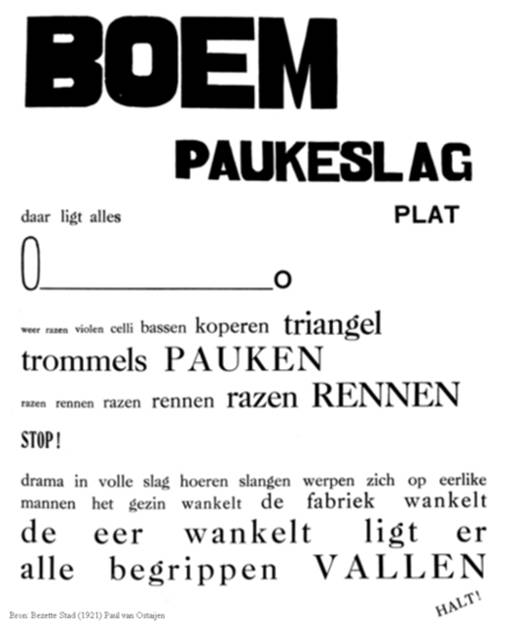
Question
Do you know of other artforms or artworks that cross the border between several forms of perception?